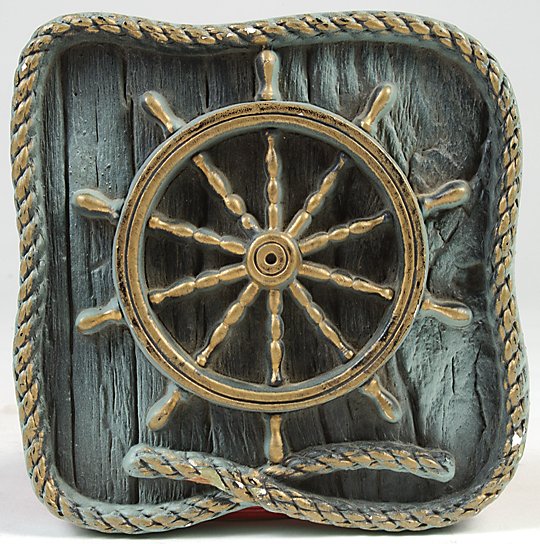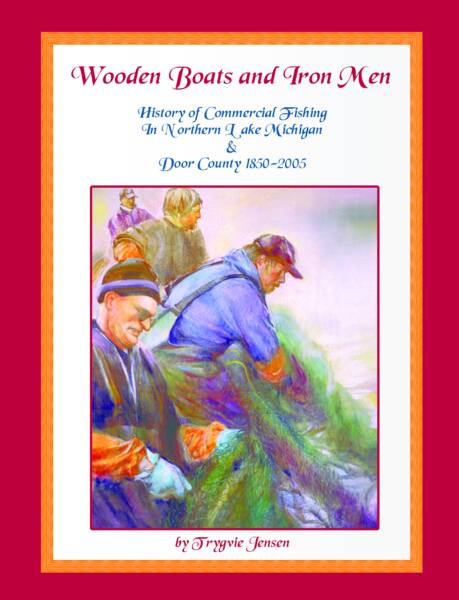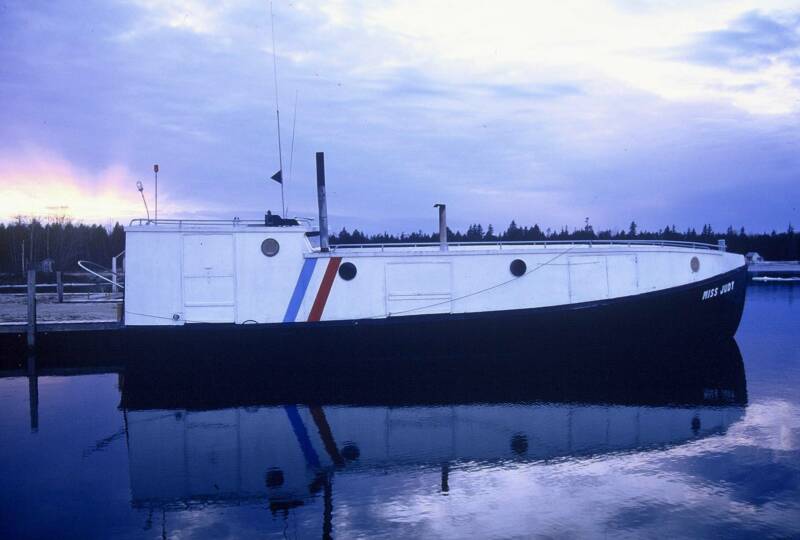Working title: Wooden Boats and Iron Men: History of Commercial Fishing in Northern Lake Michigan & Door County 1850 – 2005
Price: $29.95
Number of book pages: Hardcover 458
Illustrations: Approximately 40 Illustrations and 100 images
Overview (the book’s unique selling points):
 Commercial fishing is one of the oldest professions known to man; in which the industry has survived for nearly two hundred years on the Great lakes. Commercial fishermen are the living past, confronting an uncertain future. They epitomize the American Dream: independent, ambitious, and hardworking. Not only are they fishermen, they are carpenters, navigators, electricians, mechanics, welders, among other things. As one commercial fisherman so eloquently put it, “We don’t know how to do anything well, but we can do everything.”
Commercial fishing is one of the oldest professions known to man; in which the industry has survived for nearly two hundred years on the Great lakes. Commercial fishermen are the living past, confronting an uncertain future. They epitomize the American Dream: independent, ambitious, and hardworking. Not only are they fishermen, they are carpenters, navigators, electricians, mechanics, welders, among other things. As one commercial fisherman so eloquently put it, “We don’t know how to do anything well, but we can do everything.”
 For many of the commercial fishermen they were born into the business, carried down from generation to generation. At a young age they helped out at shore duties, eventually accompanied their father’s on the boats learning the craft first hand, assimilating into a way of life that proved to challenge one’s physical and mental strength. “It’s not the easiest life, but it’s the only life as far as I’m concerned,” says one old fisherman. Commercial fishing is often a demanding job both mentally and physically, where a fisherman is challenged by many fronts, especially that of the dangers out on the lake. In 1984 the U.S. Coast Guard stated that commercial fishing was the nation’s most dangerous profession, with a death rate seven times the national average for other industries.
For many of the commercial fishermen they were born into the business, carried down from generation to generation. At a young age they helped out at shore duties, eventually accompanied their father’s on the boats learning the craft first hand, assimilating into a way of life that proved to challenge one’s physical and mental strength. “It’s not the easiest life, but it’s the only life as far as I’m concerned,” says one old fisherman. Commercial fishing is often a demanding job both mentally and physically, where a fisherman is challenged by many fronts, especially that of the dangers out on the lake. In 1984 the U.S. Coast Guard stated that commercial fishing was the nation’s most dangerous profession, with a death rate seven times the national average for other industries.

 This book will take you back in time and show how the fisheries were an integral part of the Door County and Washington Island communities, and will give the reader an inside look at how a fishery operates. It also gives insight and a personal view of a day in the life of a fisherman. It covers every facet of the industry, from the evolution of the boats, common types of gear used in the last one hundred-fifty years, the species of fish that made up the great harvests, and the invader species that almost wiped out the industry in the mid to latter part of the twentieth century. The harrowing stories of fishermen caught in violent storms, ice shoves, and
This book will take you back in time and show how the fisheries were an integral part of the Door County and Washington Island communities, and will give the reader an inside look at how a fishery operates. It also gives insight and a personal view of a day in the life of a fisherman. It covers every facet of the industry, from the evolution of the boats, common types of gear used in the last one hundred-fifty years, the species of fish that made up the great harvests, and the invader species that almost wiped out the industry in the mid to latter part of the twentieth century. The harrowing stories of fishermen caught in violent storms, ice shoves, and
many other stories that will give the reader insight to what a commercial fisherman went through to eek out a living on the Great Lakes. It will also give the reader a better understanding of what sort of challenges befell commercial fishermen in the last century and a half and what the future may hold for the fisheries in the next century, through many interviews and reflections by the few remaining commercial fishermen.
 You will see the rise and fall of a once powerful industry, where Door County alone boasted over four hundred commercial fishermen around the turn of the century. In the last thirty-five years, the industry dwindled considerably, and there are only a handful of fishermen left on Lake Michigan. The state of Michigan lost most of their commercial fishery in the late 1960s when Michigan’s DNR emphasized the sport fishery and put the proverbial noose around the commercial fisherman’s necks through tighter restrictions and regulations; banning the gill net and zoning the lake making it impossible for them to make a living.
You will see the rise and fall of a once powerful industry, where Door County alone boasted over four hundred commercial fishermen around the turn of the century. In the last thirty-five years, the industry dwindled considerably, and there are only a handful of fishermen left on Lake Michigan. The state of Michigan lost most of their commercial fishery in the late 1960s when Michigan’s DNR emphasized the sport fishery and put the proverbial noose around the commercial fisherman’s necks through tighter restrictions and regulations; banning the gill net and zoning the lake making it impossible for them to make a living.
Author’s pertinent experience/affiliations:
Trygvie Jensen grew up on Washington Island and came from a commercial fishing family. Author’s great grandparents were commercial fishermen.
Synopsis of manuscript:
 The manuscript offers a complete history of the commercial fisheries in northern Door County and northern Lake Michigan, which was the major hub of commercial fishing in Lake Michigan. The manuscript begins with the rise of commercial fishing in the waters of Lake Michigan. The following chapters deal with the history and evolution of the commercial fishing rigs and gear. Another chapter covers the history of the four major commercial fish species followed by the invader species that affected the ecology of the lakes and the commercial fish species. The manuscript delves into a day in the life of a commercial fishery and is followed by the harrowing stories of the commercial fishermen, taken from over one hundred personal interviews. It then proceeds into the attitudes the fishermen had towards the regulators and the history and evolution of the Conservation Commission to the powerful DNR. Part II and Part III pertain more to the history of the Door County Communities and Washington Island community and fisheries.
The manuscript offers a complete history of the commercial fisheries in northern Door County and northern Lake Michigan, which was the major hub of commercial fishing in Lake Michigan. The manuscript begins with the rise of commercial fishing in the waters of Lake Michigan. The following chapters deal with the history and evolution of the commercial fishing rigs and gear. Another chapter covers the history of the four major commercial fish species followed by the invader species that affected the ecology of the lakes and the commercial fish species. The manuscript delves into a day in the life of a commercial fishery and is followed by the harrowing stories of the commercial fishermen, taken from over one hundred personal interviews. It then proceeds into the attitudes the fishermen had towards the regulators and the history and evolution of the Conservation Commission to the powerful DNR. Part II and Part III pertain more to the history of the Door County Communities and Washington Island community and fisheries.
Market/Audience: Great Lakes market with an age audience, 25 to 80 years of age.
Competition: Very minimum competition; there are only a small number of books pertaining to the commercial fisheries.
Research strategy: The data for this book was compiled through several hundred hours of research through various personal interviews with fisher families, history gathered from archives, historical societies, books, published and unpublished manuscripts, databases, periodicals, and on line sources.
.







